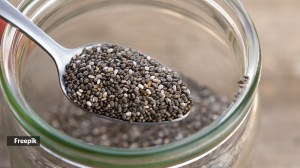Sparkling assets
From ancient times jewellery has been used by women and even men for the purpose of adornment. Flowers used by Shakuntala gave way to gol...

From ancient times jewellery has been used by women and even men for the purpose of adornment. Flowers used by Shakuntala gave way to gold, silver, stone and in more recent times designer jewellery in the form of metal, glass, bone and terracota. This artistic form of personal decoration is also at times used as a symbol of wealth and status. It is important and necessary to take good care of jewellery to make sure it retains the sparkle and the glitter.
You can clean your gold at home with cold-water and soap. By using an old toothbrush you can clear the dirt collected in the designs. But make sure that the bristles of the brush are soft. Never ever use hot water or detergents to scrub jewellery. You can also ask your local jeweller for cleaning materials. Always arrange the sets in their respective boxes while storing jewellery. In the market, jewellery pouches with different compartments are available. You could keep your separate pieces like chains rings and bracelets in such a pouch. It is easy to store jewellery in this manner. If your gold chain gets tangled, you can sprinkle talcum powder to remove the tangles.
Silver as compared to gold requires regular cleaning as it gets tarnished when exposed to atmospheric air. If a piece requires slight cleaning then you can do it at home by using soap and cold water or you can rub salt and potato slices, but if something is badly tarnished then its advisable to give it to the jeweller for cleaning. Silver jewellery should also be wrapped in tissue paper before storing.
It is easy to clean diamonds at home. Mild soap and cold water is all you need to get that sparkle. Dipping your solitaire in a glass of champagne also brings out the sparkle. Always remember to keep diamonds away from oil as it spoils the stone. Diamonds should preferably be kept in velvet or satin lined boxes and should not be allowed to rub against each other. For other precious stones like jades, emeralds, rubies, garnets and sapphires, follow the same guidelines which are used for diamonds. Also remember never to wash a stone under the tap.
Pearls and corals both get damaged by heat, perspiration and chemicals. After use whenever you are storing them, always wipe pearls and corals with a damp cloth and immediately wipe dry with a soft cloth. It’s advisable to string pearls in nylon threads rather than gold or silver strings. Pearls and corals should be stored in velvet or satin lined boxes and should not be allowed to rub against each other.
It is advisable to take off finger rings while gardening and other cleaning work. Remove all jewellery when exercising, swimming or playing tennis, badminton or squash.
While travelling especially by the public transport, avoid wearing heavy and expensive jewellery. It will attract unnecessary attention and may land you in trouble.
Jewellery should always be purchased from reputed and known shops. Remember to preserve the purchase bill. You never know when you’ll require it.
Some Glittering Facts
Pearls are of three types, cultured, natural and imitation pearls.
Pearls are judged according to their shape, colour and blemish.
Oriental pearls are the most valuable. They come in black, pink, cream, white, orange and gold colours. Black (dark grey) pearls are the most valuable of all.
Pearls are sold in “grains”. Four pearl grains are equal to 200 milli grams.
Diamonds are available in yellow, blue, black, brown, green, pink, purple and red tints. Red diamond is very rare. Pink diamonds are the most valuable and also rare. Colourless diamonds are the most valuable.
The four C’s (colour, cut, clarity and carat) are very important while buying a diamond. A perfect diamond should have no defects such as blemishes, scratches, cracks or cloudy appearances.
Diamonds are always set in 18 carat gold.





- 01
- 02
- 03
- 04
- 05


























